COP27: Harnessing Solar Energy for a Sustainable Future
COP27: Harnessing Solar Energy for a Sustainable Future
COP27 is the latest in a long line of global climate conferences, which have been held regularly since 1994. The United Nations Framework Convention on Climate Change (UNFCCC) was created at the 1992 Rio Earth Summit. It aims to reduce greenhouse gas emissions and avoid dangerous levels of human-caused climate change.
Since then, the UNFCCC has organized annual conferences, known as COPs, to assess progress and set goals toward mitigating climate change.
Key Takeaways from COP27 held in November 2022
For two weeks in November, COP27 convened a variety of events to tackle climate change. Over 35,000 people from all over the world attended, including more than 100 Heads of State and Government. In addition to key negotiations and press conferences, there were also pavilions highlighting different aspects of climate action being taken across the globe.
- The 27th Conference of the Parties to the United Nations Framework Convention on Climate Change ended with a momentous decision to create and activate a loss and damage fund, which took place in Sharm el-Sheikh, Egypt. After days of intense negotiations, countries reached an agreement to establish a fund that would compensate vulnerable nations for the ‘loss and damage’ they experience from climate-induced disasters.
- UN Secretary-General António Guterres welcomed the new fund, calling it essential but also saying that more needs to be done to drastically reduce emissions now. “The world still needs a giant leap on climate ambition.”
- It is crucial, he continues, that we don’t cross the “red line” of a 1.5-degree temperature increase on our planet. The fight for climate justice and ambition must continue until we see change.
Significance of harnessing solar energy for a sustainable future
Solar energy is one of the most viable and abundant sources of renewable energy available. It offers a,
- clean
- low-cost, and
- reliable form of energy
that can be used to power homes, businesses, and entire communities. By harnessing the power of the sun, we can reduce our dependence on fossil fuels and other harmful emissions while creating economic opportunities, reducing energy costs, and decreasing our environmental impact.
Challenges of Harnessing Solar Energy
Financial and technical barriers
explain financial and technical barriers in harnessing solar energy
Financial and technical barriers are a major challenge to the successful implementation of solar energy. The cost of installing and running a solar system, as well as the lack of access to technical expertise in many areas, can make it difficult for people in developing countries or disadvantaged communities to access solar energy.
Variability in sunlight availability
The variability of sunlight availability is another significant barrier to the use of solar energy. Sunlight intensity can vary due to changing weather patterns, which can affect the amount of electricity generated by a solar system. Additionally, seasons and cloud cover can further complicate matters as they both have an impact on the amount of light available for harvesting.
COP27 Initiatives for Promoting Solar Energy
COP27 initiatives are like a ray of sunshine on a cloudy day, helping to dispel any doubts and worries about the future of solar energy. By providing financial support, technical assistance, and increased access to expertise, COP27 can help accelerate the adoption of solar energy around the world.
Lowering costs through technological advancement & government subsidies
– COP27 initiatives aim to lower the cost of solar energy through research and development of new, more efficient technologies.
– Governments have also been encouraged to subsidize the installation of solar systems to make them more affordable for households and businesses.
– Tax incentives, grants, and other financial assistance are also available in many countries to help lower the cost of solar energy.
– Furthermore, COP27 works to increase access to available resources and information on efficient solar technologies by providing training and capacity-building opportunities.
Promotion of international collaboration
– COP27 promotes international collaboration by connecting experts, corporations, and other organizations to form partnerships that allow for the sharing of best practices and insights.
– These collaborations help disseminate information about the benefits of solar energy, as well as provide access to resources and training opportunities.
– In addition, international collaboration fosters a spirit of cooperation and helps to create a global platform for the exchange of ideas and advice.
– By working together on initiatives such as these, countries can take advantage of each other’s strengths in order to increase access to solar energy around the world.
Development of policies to facilitate the transition
– COP27 initiatives aim to provide support and guidance for countries transitioning to renewable energy sources, such as solar.
– This includes the development of policies that facilitate the adoption of new technologies, reduce regulatory burdens, and promote incentives for businesses and households alike.
– By creating an enabling environment for the deployment of solar energy solutions, these policies can help spur the deployment of solar energy around the world.
– In addition, COP27 also works to create standards and protocols that ensure safe and reliable access to renewable energy sources.
– These standards help facilitate international cooperation by ensuring a level playing field for all countries involved in the development of solar energy.
– Finally, COP27 works to promote public awareness and education about solar energy, which is key to making the transition to renewables successful.
Conclusion
In conclusion, COP27 initiatives have been instrumental in advancing the use of solar energy around the world. By providing financial support, technical assistance, and increased access to expertise, they have helped lower the cost of solar energy and facilitate its adoption. In addition, they have forged partnerships and collaborations to increase access to resources and training opportunities, while also establishing standards and protocols that ensure safe and reliable access to renewable energy sources. Finally, COP27 initiatives have worked to promote public awareness and education about solar energy to ensure a successful transition to renewables. Together, these efforts have helped make solar energy a viable and increasingly popular source of renewable energy around the world.
Suggested Articles

Complete Guide to Net Metering and Electricity Bill Savings
Learn how net metering lets you sell excess solar energy back to the grid, reducing your electricity bills and maximizing your solar investment.
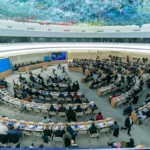
6 Upcoming Renewable Energy Events in India You Should Attend
The World Environment Expo, 2022 is a business platform that allows national and international equipment

China’s Solar Industry Poised for Continued Growth in 2023 and Beyond
China’s solar industry is set for continued growth in 2023 and beyond, driving global renewable energy expansion and technological advancements.
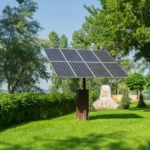
Solar Power Park Scheme: Central Government Expands Clean Energy Initiative
The Union government plans to launch the second phase of a dedicated program to develop solar parks across the country that will aim to plug loopholes and overcome slow progress.

What Is a Solar Power Generating System? | Complete Guide
A solar power generating system converts sunlight into electricity for residential, industrial, and commercial use. This blog explains the components, working, and benefits of solar systems, helping you understand how to harness solar energy efficiently and sustainably.
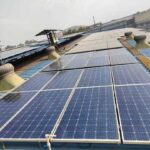
How to Calculate Savings from Rooftop Solar Solutions: A Complete Guide
Calculating savings from rooftop solar solutions is essential for planning your investment. This guide explains how to estimate cost reduction, return on investment, and long-term financial benefits for residential, commercial, and industrial solar projects.
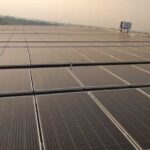
Yes, I Have Installed an Optimized Solar PV Rooftop System at My Premises
A solar power generating system converts sunlight into electricity for residential, industrial, and commercial use. This blog explains the components, working, and benefits of solar systems, helping you understand how to harness solar energy efficiently and sustainably.
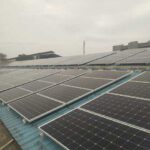
Are Colleges and Schools ready to take up Solar challenge?
Adopting solar energy can help schools and colleges reduce electricity costs and promote sustainability. This guide explores how educational institutions can implement rooftop solar projects, the benefits, and what steps are needed to take on the solar challenge effectively.